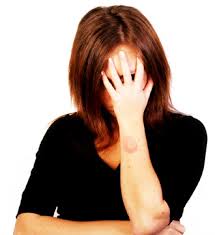There is a saying that beauty is only skin deep. And since our skin covers and protects our body, most people do their utmost to take care of it. However, no matter how healthy you are, you are susceptible to various skin problems. One of the primary causes of skin problems is fungal infection. There are various forms of fungal infection such as dermatophytes. Dermatophytes cause common skin, hair and nail infections, and they are known as "tinea" and "ringworm". Ringworm in humans, which is also called dermatophytosis, attacks humans with weakened immune systems. The possibility of having ringworm in humans is relatively high in people who share things with others, or those who engage in contact sports. Ringworm infection is classified as superficial for it only exists on the surface of the skin. Although it does not lead to death, those with ringworm suffer not only physically but emotionally as well due to the unfavorable reaction they get from people they encounter.
There is a misconception that ringworm in humans is caused by worms, and that it always presents itself in a circular form. It is brought about by a type of fungus known as "dermatophyte", and it comes in different forms. Dermatophytes are classified into three groups; anthropophilic, which is associated with humans but can also infect animals; zoophilic, which is tied up with animals; and geophilic, which dwells on land. There are different types of ringworm in humans. Tinea capitis infects the scalp, and is most common in children. Tinea Corporis is the ringworm commonly found on the arms and legs, and it appears as a ring-like patch. Tinea pedis is ringworm on the feet, more popularly known as athlete's foot. The fungus that causes athlete's foot thrives in moist environments, and is highly transmittable. Tinea Cruris contaminates the skin on the groin of adolescent and young adult men. It will manifest as elevated sores or pustules with reddish color. Tinea Unguium spreads to the fingernails or toenails. It is usually caused by athlete's foot, ill-adapted or tight shoes, and diabetes.
Keratin, which can be found on the outer layer of the skin, hair and nails feed the fungi that causes ringworm in humans. They grow rapidly in warm and damp areas. Luckily, several medications are now available to cure ringworm in humans. Doctors recommend antifungal creams or agents for ringworm on exposed skin. Tinactin cream, which will block the growth of fungi that cause skin infections, is generally prescribed to people with ringworm on feet and groin. Antifungal shampoo, on the other hand, is suggested for those with ringworm on the scalp. Treating ringworm on the scalp can be complicated since the fungus that causes the problem thrives in hot and moist environment such as the scalp. With this, oral antifungal medication can also be taken to effectively resolve the problem.
 RSS Feed
RSS Feed Twitter
Twitter 23:53
23:53
 free health # fitness
free health # fitness
0 comments:
Post a Comment